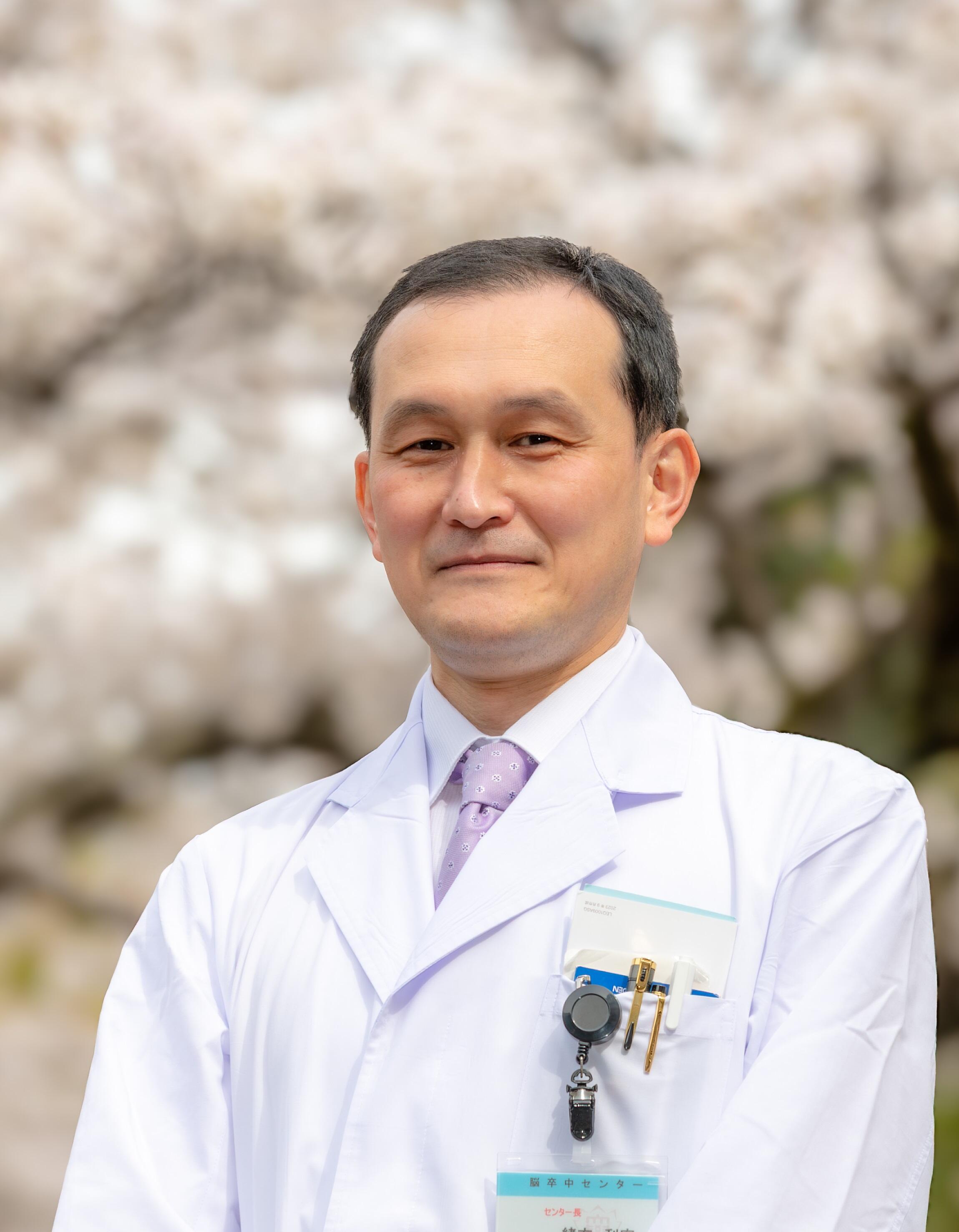Departments and Centers
Stroke Center

The total number of people suffering from stroke, including patients who have been hospitalized due to stroke and those currently receiving outpatient care, is said to be 1.74 million, making it a disease that affects a very large number of people. One in four Japanese people suffers a stroke at least once in their lifetime, and once they have suffered a stroke, 80% of them are said to be left with some kind of sequela. Therefore, from the perspective of healthy life expectancy, the government is also paying attention to stroke treatment, and in 2018 the Basic Act on Stroke and Cardiovascular Disease Countermeasures was enacted, with progress being made in establishing a legal framework for the medical treatment systems of hospitals that provide stroke treatment. In line with these trends, our hospital has decided to open a stroke center.
What is a stroke? -- A life-threatening cerebrovascular disease
Stroke (cerebrovascular disorder) is a general term for diseases caused by the rupture or blockage of blood vessels in the brain, and includes cerebral infarction, cerebral hemorrhage, and subarachnoid hemorrhage. A stroke is a condition in which the blood flow to the brain is reduced in part of the artery, causing a lack of oxygen and glucose, resulting in the death of brain cells. Cerebral hemorrhage occurs when small blood vessels in the brain rupture. Subarachnoid hemorrhage can also occur if a bulge (aneurysm) in an artery in the brain ruptures. More than two-thirds of strokes are cerebral infarctions.
Stroke treatment is a team effort -- Working together from emergency care to rehabilitation
Stroke patients are often seen in the emergency room, so it is essential to have a well-organized emergency service structure and to cooperate with emergency teams and local general practitioners. Immediately after the onset of symptoms, in order to minimize damage, in the case of cerebral infarction, thrombolytic therapy is performed to remove the causative blood clot, or catheter-based thrombectomy therapy is performed. In the case of cerebral hemorrhage, hematoma removal surgery is performed, and in the case of subarachnoid hemorrhage, coil embolization is performed. The patient will be admitted to a specialized stroke ward for drug therapy (in the case of cerebral infarction, treatment with blood thinning medications and medications to protect the brain), blood pressure management, and management of complications such as heart disease, gastrointestinal bleeding, and pneumonia. At the same time, we also provide for patients with rehabilitation and nutritional therapy, as well as with guidance on how to live at home whenever necessary. Because stroke treatment is advanced and complicated, the Stroke Center provides medical care in collaboration with three departments: the Department of Neurology, the Department of Neurosurgery, and the Emergency and Critical Care Center. We also collaborate with the Division of Nursing, and Clinical Nutrition, Pharmacy, and Rehabilitation Departments.
We have a system in place to provide consultation at any time -- Stroke treatment linked to the community
The current stroke treatment structure in Japan is divided into Primary Stroke Centers (PSCs), which accept stroke patients 24/7 throughout the year to provide acute stroke treatment, and PSC Cores, which can provide constant treatment such as thrombectomy. The PSC Core also mandates the establishment of a stroke consultation center to provide information on medical care and nursing care for patients and their families. At our hospital, a stroke consultation center has been established to answer questions about stroke from patients and their families.
At our Stroke Center, we aim to provide high-quality stroke treatment while also supporting local medical care.

